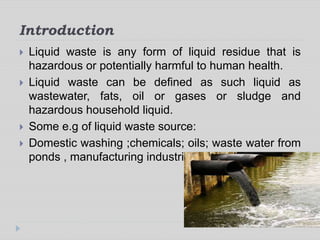The Single Strategy To Use For Reclaim Waste
The Single Strategy To Use For Reclaim Waste
Blog Article
The Best Guide To Reclaim Waste
Table of ContentsThe Best Guide To Reclaim WasteGetting My Reclaim Waste To WorkThe 7-Minute Rule for Reclaim WasteThe 2-Minute Rule for Reclaim WasteThe Of Reclaim Waste
Residential sewage waste refers to the waste and products from a domestic septic container. The correct monitoring and disposal of residential sewer waste call for fluid waste to be moved to a sewer treatment plant where the correct methods and devices are used to detoxify and dispose of waste.
Business waste frequently includes possible hazards, such as combustible materials or a mixture of fluid and solid waste items, and requires an extra sophisticated and detailed disposal process. The disposal of commercial waste normally entails the purification of waste before transport to ensure safe and proper disposal. Hazardous waste is produced from by-products and runoff of commercial processes and manufacturing.
This type of waste can not use the same sewer management transport or procedures as septic or industrial fluids. The hazardous waste administration procedure calls for the inspection and screening of liquid waste prior to it undergoes the disposal process (liquid waste disposal melbourne). Overflow waste is the liquid waste that comes from overflow and excess stormwater in extremely inhabited areas or cities
Drainage waste can create contamination and flooding if not managed appropriately. Find out more about sewer cleansing and waste monitoring. Making certain correct waste monitoring can protect against disasters and lower ecological damage. Both individuals in domestic settings and professionals in commercial or production markets can take advantage of comprehending the procedures and policies of liquid waste monitoring.
Reclaim Waste Fundamentals Explained
Call PROS Solutions today to discover our waste administration and disposal solutions and the appropriate ways to look after the liquid waste you generate.
(https://soundcloud.com/reclaimwaste1)Do you know what happens to your water when you disengage, purge the commode or drain pipes the washing maker? No? Well, it deserves recognizing. This supposed 'wastewater' is not just an important resource however, after therapy, will be released to our land, waterways or the ocean. Utilized water from bathrooms, showers, bathrooms, kitchen area sinks, laundries and industrial processes is called wastewater.

water utilized to cool down machinery or clean plant and equipment). Stormwater, a form of wastewater, is runoff that flows from farming and urban areas such as roofing systems, parks, yards, roads, paths and rain gutters into stormwater drains, after rainfall. Stormwater streams unattended directly to neighborhood creeks or rivers, at some point reaching the ocean.
5 Simple Techniques For Reclaim Waste
In Queensland, most wastewater is treated at sewer therapy plants. Wastewater is transported from domestic or industrial websites with a system of sewers and pump stations, known as sewage reticulation, to a sewer treatment plant.
The Department of Natural Resources recommends city governments regarding managing, operating and keeping sewerage systems and treatment plants. In unsewered locations, neighborhood federal governments may require owners to set up private or family sewage treatment systems to deal with residential wastewater from commodes, cooking areas, bathrooms and washings. The Department of Natural Resources authorizes making use of family systems when they are proven to be efficient.
In some new communities, treatment of some stormwater to remove clutter, sand and crushed rock has started using gross contaminant catches. Wastewater treatment takes place in 4 stages: Removes solid matter.
Wastewater then flows into huge storage tanks where solids work out and are gotten rid of as sludge. Oil and scum are skimmed from the surface area. Makes use of small living organisms referred to as micro-organisms to break down and eliminate continuing to be dissolved wastes and fine bits. Micro-organisms and wastes are included in the sludge. Removes nitrogen and phosphorus nutrients that can trigger algal blooms in our waterways and intimidate water life.
Some Known Questions About Reclaim Waste.
Nutrient elimination is not available at all sewage treatment plants because it requires pricey specialized tools. Clear fluid effluent produced after treatment may still contain disease-causing micro-organisms - liquid waste removal melbourne.

This normally means wastewater has to be treated or pollutants removed prior to it can be discharged to waterways. Most wastewater moves into the sewage system. Under the Act, local federal governments administer approvals and permits for eco pertinent activities (ERAs) entailing wastewater releases that might have a neighborhood effect. The division carries out authorizations and permits to ERAs involving wastewater launches that might have a local or statewide influence.
An Unbiased View of Reclaim Waste
Otherwise, examples are taken for lab evaluation. Commonly many tests are required to develop the levels of each of the different toxins such as oils, hefty steels and pesticides in water. Surveillance supplies valid information about water quality and can verify that permit conditions are being fulfilled. The info obtained through tracking supplies the basis for making water high quality choices.
Report this page